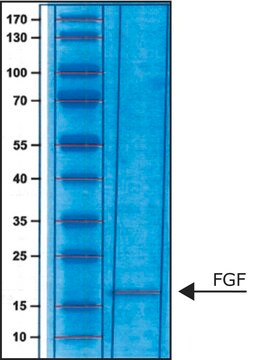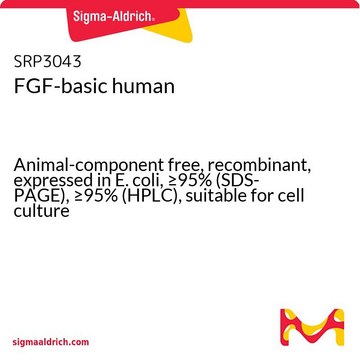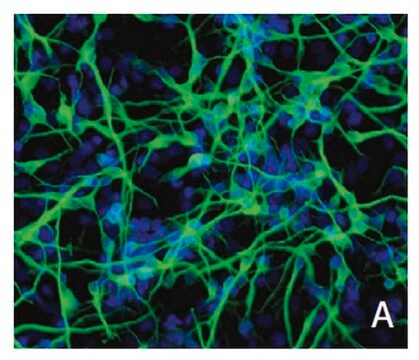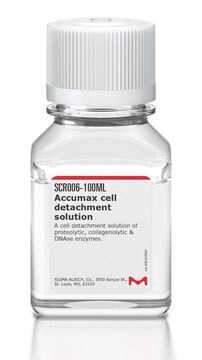GF003AF
Fibroblast Growth Factor basic, human
Animal free, >95% (SDS-PAGE), recombinant, expressed in E. coli, suitable for cell culture
Synonyme(s) :
FGF-2, bFGF, basic-FGF, Heparin-Binding Growth Factor 2, Prostatropin
About This Item
Produits recommandés
product name
Fibroblast Growth Factor basic, human recombinant, animal-free, The Fibroblast Growth Factor-basic (or bFGF protein) is a heparin binding growth factor which stimulates the proliferation of a wide variety of cells including mesenchymal, neuroectodermal & endothelial cells.
Source biologique
human
Niveau de qualité
Pureté
>95% (SDS-PAGE)
Fabricant/nom de marque
Chemicon®
Technique(s)
cell culture | stem cell: suitable
Impuretés
<0.1 EU/μg Endotoxin (of bFGF)
Entrée
sample type epithelial cells
sample type mesenchymal stem cell(s)
sample type: human embryonic stem cell(s)
sample type neural stem cell(s)
sample type pancreatic stem cell(s)
Numéro d'accès NCBI
Numéro d'accès UniProt
Description générale
Application
Forme physique
Stockage et stabilité
General applications:
After a quick spin, reconstitute in 0.1M phosphate buffer, pH 6.8, to a concentration of 0.1-1.0 mg/mL. Reconstituted bFGF should be stored in working aliquots at -20°C for up to six months. Multiple freeze/thaw cycles will result in significant loss of activity.
For Human ES cell culture:
After a quick spin, reconstitute to 10 μg/mL in a filtered solution of 0.5% BSA, 1 mM DTT, and 10% glycerol in Dulbecco′s PBS. Aliquot and store at -20°C for up to six months. This solution can then thawed and diluted to 4 ng/mL for the culture of human ES cells with a feeder layer, or to 8 ng/mL to supplement mouse embryonic fibroblast-conditioned medium (for feeder-free human ES cell culture).
Remarque sur l'analyse
Informations légales
Clause de non-responsabilité
Code de la classe de stockage
11 - Combustible Solids
Classe de danger pour l'eau (WGK)
WGK 3
Certificats d'analyse (COA)
Recherchez un Certificats d'analyse (COA) en saisissant le numéro de lot du produit. Les numéros de lot figurent sur l'étiquette du produit après les mots "Lot" ou "Batch".
Déjà en possession de ce produit ?
Retrouvez la documentation relative aux produits que vous avez récemment achetés dans la Bibliothèque de documents.
Les clients ont également consulté
Articles
Fibroblast growth factors in cell culture and various growth factors for your research
Protocoles
Learn to culture ReNcell® human neural stem cells (NSCs) in 3D hydrogels like the TrueGel3D® HTS Hydrogel Plate using this step by step protocol for high-throughput screening cell culture applications.
Learn how to culture human adipose mesenchymal stem cells (MSCs) in 3D hydrogels like the TrueGel3D® Hydrogel Plate using this step-by-step protocol for high-throughput screening cell culture applications.
Notre équipe de scientifiques dispose d'une expérience dans tous les secteurs de la recherche, notamment en sciences de la vie, science des matériaux, synthèse chimique, chromatographie, analyse et dans de nombreux autres domaines..
Contacter notre Service technique













